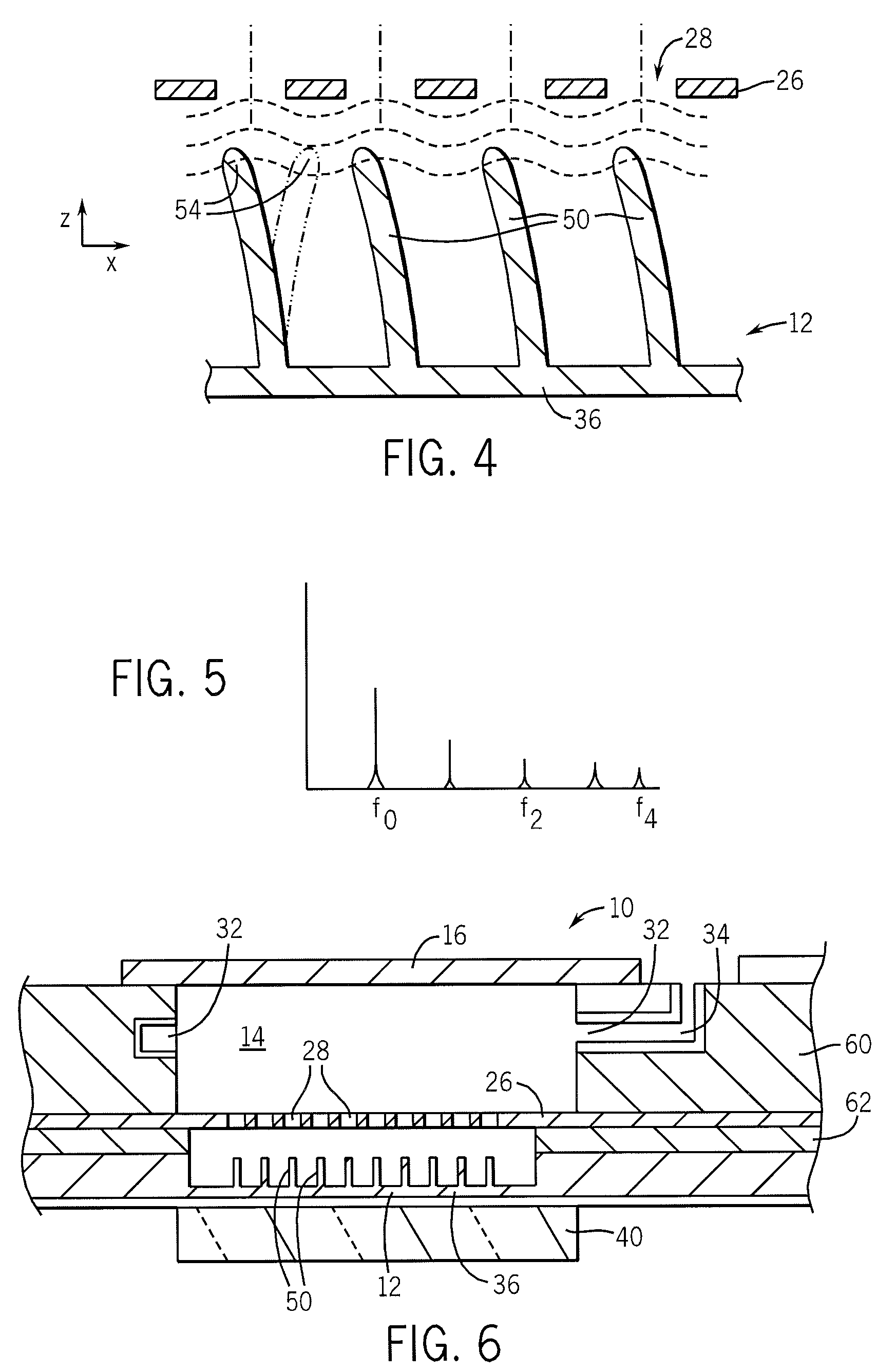Microscale high-frequency vacuum electrical device
a vacuum electrical and micro-scale technology, applied in the manufacture of electrode systems, transit-tube cathodes, electric discharge tubes/lamps, etc., can solve the problems of increasing undesired electrical interactions, and achieve the effect of simplifying device tuning, reducing undesired electrical interactions among device signals, and simplifying circuit design
- Summary
- Abstract
- Description
- Claims
- Application Information
AI Technical Summary
Benefits of technology
Problems solved by technology
Method used
Image
Examples
Embodiment Construction
[0041]Referring now to FIG. 1, one embodiment of the invention may provide a klystrode 10 having a conductive cathode 12 opposed with one or more conductive anodes 16, defining between them a “drift space”14, all held within an evacuated housing 20. The cathode 12 may be biased with respect to the anodes 16 by a DC bias source 22 as is understood in the art. Under the influence of the bias source 22, electrons are emitted from the cathode 12 and drawn in an electron beam 24 along a z-axis into the drift space 14.
[0042]The surface of the cathode may be of a type, as will be described below, to promote non-thermionic, low-temperature emission of electrons (field emissions) to provide for “cold cathode” operation. The cold operation of the cathode 12 allows it to be placed close to a grid 26, positioned between the cathode 12 and anode 16 so that electrons of the electron beam 24 must pass through apertures 28 in the grid before reaching the drift space 14.
[0043]In one possible operati...
PUM
 Login to View More
Login to View More Abstract
Description
Claims
Application Information
 Login to View More
Login to View More - R&D
- Intellectual Property
- Life Sciences
- Materials
- Tech Scout
- Unparalleled Data Quality
- Higher Quality Content
- 60% Fewer Hallucinations
Browse by: Latest US Patents, China's latest patents, Technical Efficacy Thesaurus, Application Domain, Technology Topic, Popular Technical Reports.
© 2025 PatSnap. All rights reserved.Legal|Privacy policy|Modern Slavery Act Transparency Statement|Sitemap|About US| Contact US: help@patsnap.com



